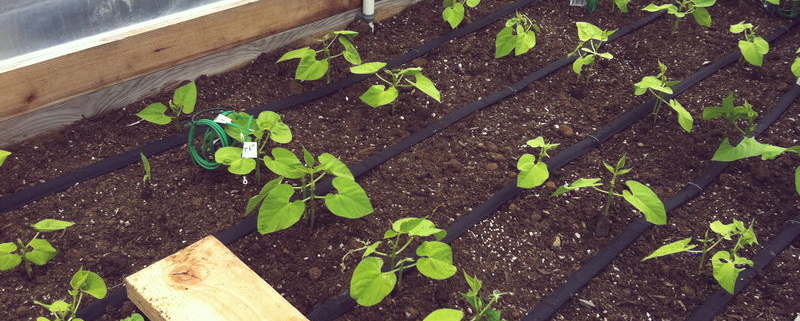Watering & Irrigation
The quantity of water required for each plant varies significantly. Typically vegetables, fruits, greens and herbs need to be watered once in 5 days. However, this is not a rule of thumb and significantly depends on the weather conditions such as heat, rain and humidity.
The best way to check if plants need watering is to feel the soil. Do not judge the soil moisture content by looking at the visible top portion of the soil, rather, stick your finger into the soil to see if it is moist, sticky or dry, and then water.
When watering, always water at the base of the plants. Leaves can be sprinkled with water if they look too dry. It is recommended to water early in the morning before the sun is at its peak, or in the evenings when the sun is past its peak. At these times, when the foliage of the plant gets wet by watering, there is enough time for the water to dry up, eliminating the possibility of unwanted pests/fungal diseases that are caused due to high moisture levels.
If the plants are grown in planter boxes/ containers, it is best to water daily as the soil gets dry quickly as it is shallow, however do test the soil to be sure.
Rain Cover
With the exception of some herbs, greens and microgreens, all plants can generally survive exposure to direct rain. Note that any excess and heavy rains can destroy any plant.
Water Recycling / Grey Water Use
Apart from the conventional sources of water which typically include Metro Water and bore water, you can also use recycled water for your gardens. For instance, water from ACs and RO systems can be used in the gardens, as well as treated grey water.
Grey water refers to water from bathing, washing and cleaning i.e. from showers and kitchen sinks which does not have fecal matter. Grey water can be treated in every building with a simple modification to the plumbing system which diverts it from the main sewage line by the introduction of a diversion valve which directs the grey water into a separate tank for filtration. The water in the tank can be treated with bleach or other nano chemicals.
Grey water can also be treated using a plant based method by diverting the grey water to a plant bed having porous soil and mature water-loving plants such as Canna Indica, Banana or Ginger Lily, i.e., plants capable of filtering the water. The treated water can be collected in a tank and pumped up to an overhead tank for future use or can be allowed to filter into the ground, recharging the ground-water table.
Drip Irrigation
Drip irrigation is recommended for any thottam with over 50 pots. It is strongly advised in places with water scarcity issues, but is a great water conservation practice even if you have abundant water.
If you happen to live in an area with salty water, drip irrigation can be a challenge as the fine nozzles in the system get blocked over time with salt sediments. The entire system will need to be serviced periodically and nozzles flushed with sweet water to remove blocks.
Treating the salt water prior to diverting it for drip irrigation can be an expensive proposition if your water is of very poor quality. However, you could try a low cost trick: Alum (padigaram) may be broken down to smaller crystals, tied up in a white cotton cloth and put into the water tank containing salty water. Alum helps to precipitate and coagulate sediments and can reduce water impurities. This setup must be replaced once every 6 months.
Rain Water Harvesting
NOTE: Be sure to read the guide on Rain Water Harvesting.
REFERENCES
Personal Conversation with Mrs. K. Parimala, Sempulam Sustainable Solutions Private Limited
Personal Conversation with Mr. Alladi Mahadevan, The Organic Farm
https://chennai.citizenmatters.in/grey-water-recycling-guide-8597
https://www.thehindu.com/news/cities/chennai/a-guide-to-greywater-recycling-in-your-backyard-with-canna-plants/article28319205.ece

